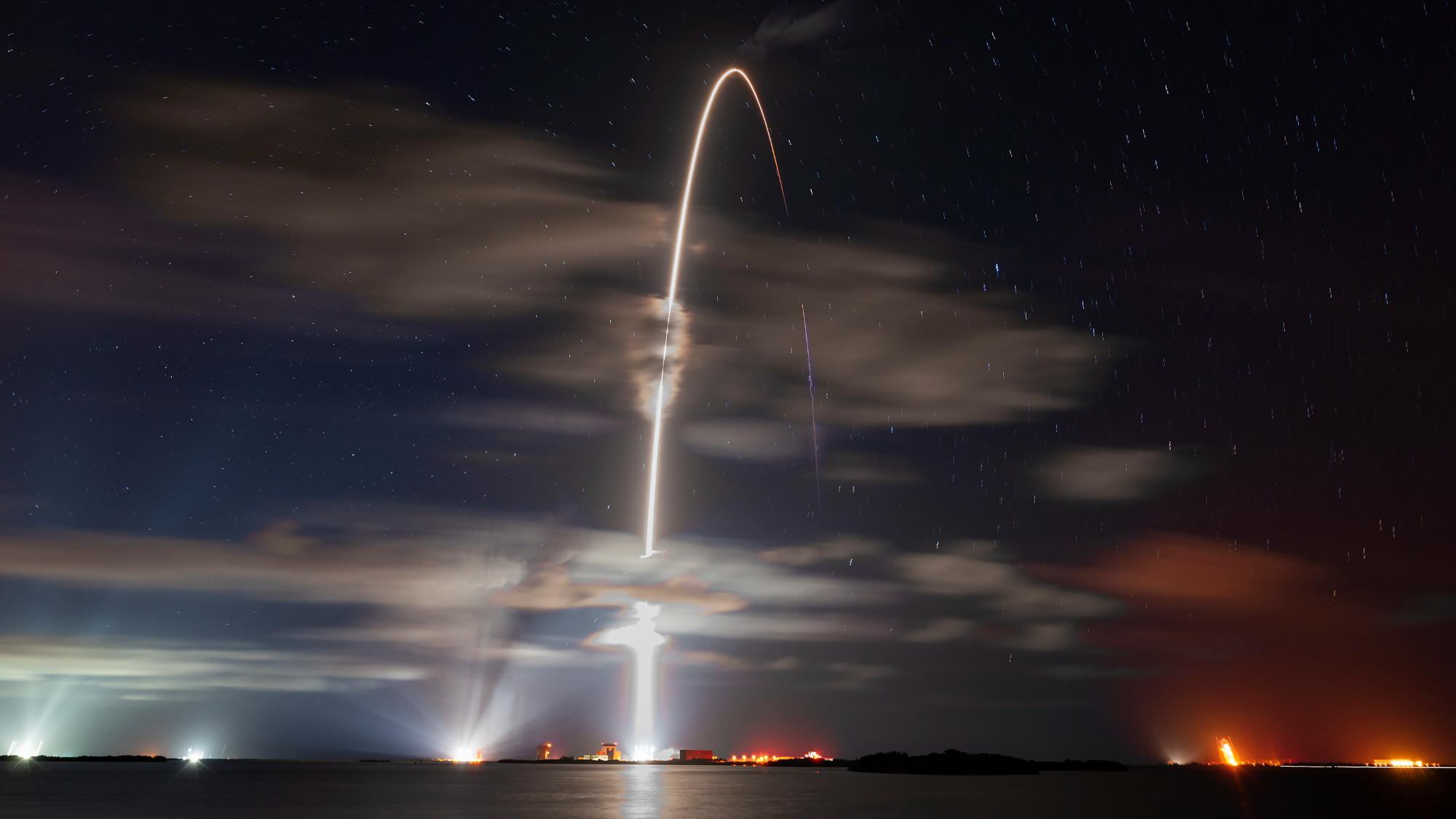SpaceX launches 20 Starlink satellites, including 13 direct-to-cell craft (video)
SpaceX launched another batch of its Starlink internet satellites on Tuesday night (June 4), including 13 that can beam service directly to smartphones.
The Starlink spacecraft took flight atop a Falcon 9 rocket from Cape Canaveral Space Force Station in Florida tonight at 10:16 p.m. EDT (0216 GMT on June 5).
The Falcon 9's first stage returned to Earth about 8.5 minutes after launch as planned, landing on the SpaceX droneship Just Read the Instructions in the Atlantic Ocean.
Related: Starlink satellite train: How to see and track it in the night sky

It was the 20th launch and landing for this particular booster, according to a SpaceX mission description. That's just one shy of the company's reuse record, which it set on a Starlink launch last month.
The Falcon 9's upper stage, meanwhile, continued carrying the 20 Starlink satellites to low Earth orbit, where they were deployed about 52 minutes after liftoff.
Falcon 9’s first stage lands on the Just Read the Instructions droneship, completing our first launch and landing this month pic.twitter.com/T42up3gKfhJune 5, 2024
So far in 2024, SpaceX has launched 58 orbital missions, 41 of which have been dedicated to building out the huge and ever-growing Starlink megaconstellation.
Breaking space news, the latest updates on rocket launches, skywatching events and more!
SpaceX is gearing up for a much more dramatic launch this week — the fourth test flight of its Starship megarocket. That highly anticipated mission is scheduled to lift off from the company's Starbase site in South Texas on Thursday morning (June 6).
Editor's note: This story was updated at 1:40 a.m. ET on June 5 with news of successful launch, rocket landing and satellite deployment.

Michael Wall is a Senior Space Writer with Space.com and joined the team in 2010. He primarily covers exoplanets, spaceflight and military space, but has been known to dabble in the space art beat. His book about the search for alien life, "Out There," was published on Nov. 13, 2018. Before becoming a science writer, Michael worked as a herpetologist and wildlife biologist. He has a Ph.D. in evolutionary biology from the University of Sydney, Australia, a bachelor's degree from the University of Arizona, and a graduate certificate in science writing from the University of California, Santa Cruz. To find out what his latest project is, you can follow Michael on Twitter.
